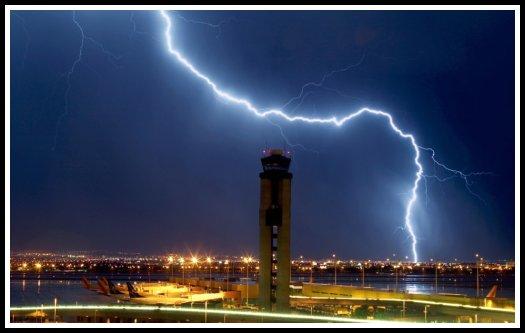Beyond
runway capacity issues, weather is a major factor in traffic capacity. Rain, ice
or snow on the runway cause landing aircraft to take longer to slow and exit,
thus reducing the safe arrival rate and requiring more space between landing
aircraft. Fog also requires a decrease in the landing rate. These, in turn,
increase airborne delay for holding aircraft. If more aircraft are scheduled
than can be safely and efficiently held in the air, a ground delay program may
be established, delaying aircraft on the ground before departure due to
conditions at the arrival airport.
In Area
Control Centers, a major weather problem is thunderstorms, which present a
variety of hazards to aircraft. Aircraft will deviate around storms, reducing
the capacity of the en-route system by requiring more space per aircraft, or
causing congestion as many aircraft try to move through a single hole in a line
of thunderstorms. Occasionally weather considerations cause delays to aircraft
prior to their departure as routes are closed by thunderstorms.
A lot of money has been spent on creating software to streamline this process. However,
at some ACCs, air traffic controllers still record data for each flight on
strips of paper and personally coordinate their paths. In newer sites, these flight
progress strips have been replaced by electronic data presented on computer
screens. As new equipment is brought in, more and more sites are upgrading away
from paper flight strips.


